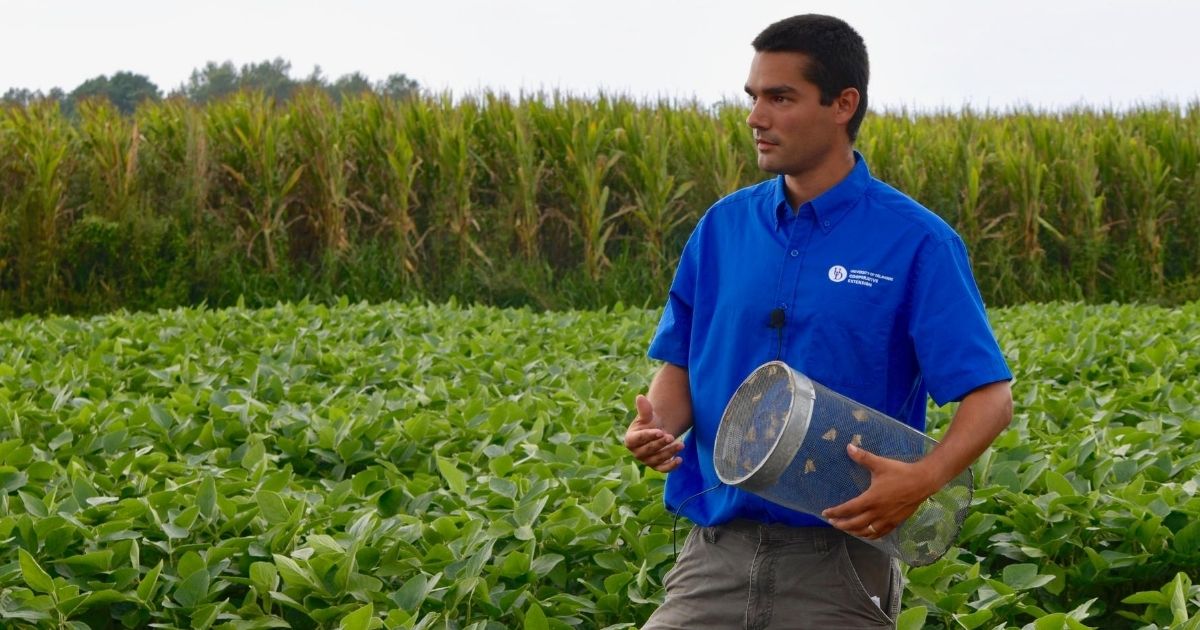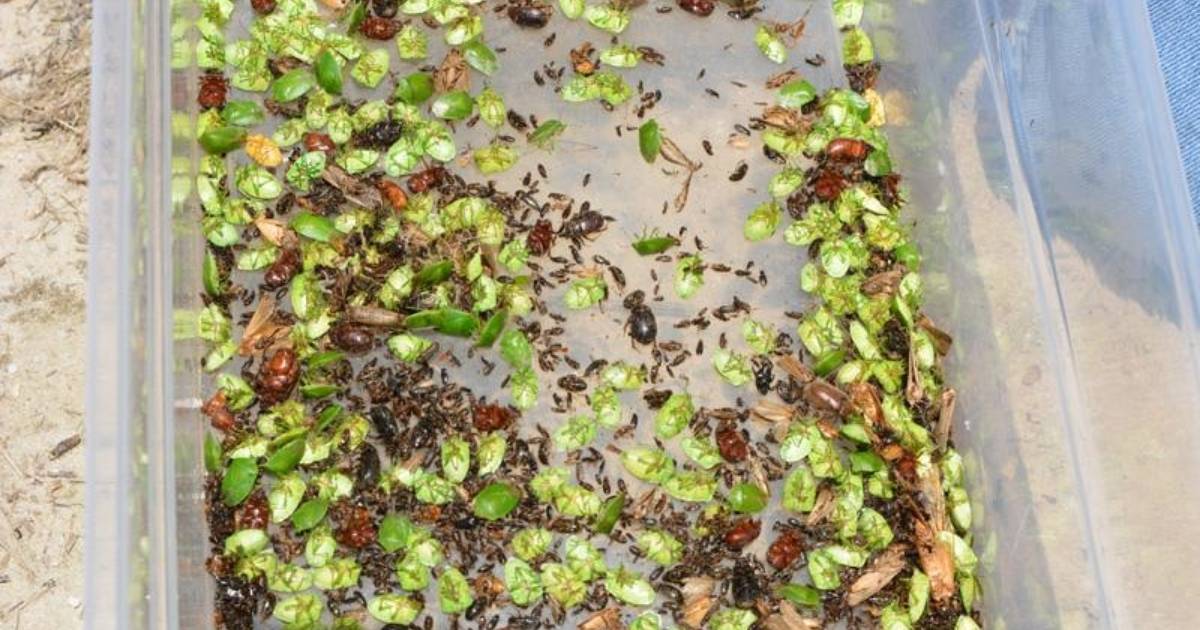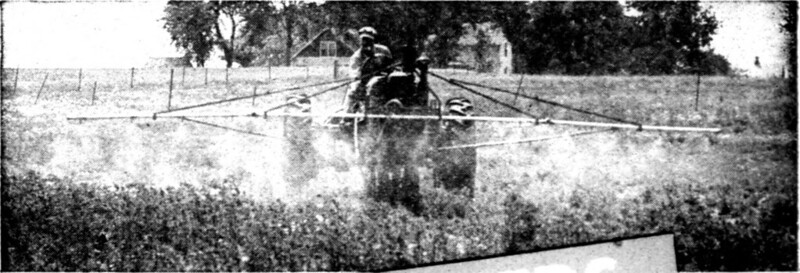
IPM: Sustainable Solutions For Insect Pests

IPM: Sustainable Solutions For Insect Pests
by David Owens, Extension Specialist - Entomology
When most folks think of pest management, it’s easy to picture someone spraying ‘harmful chemicals’ around a yard, a field, or even a crop duster plane flying nearby. It then becomes easy to think of chemical pest management as ‘unsustainable’ and not ‘environmentally-friendly.’ You do not see the process of using multiple management tactics designed to avoid having to spray much at all. This decision-making process is called integrated pest management or IPM. This process has made agriculture far more sustainable and environmentally friendly today than at any other point in human history.
Entomologists developed the concept of IPM in the late 1950s to respond to new problems being faced by pest control operators — issues brought on by the use of new miracle chemicals. Before the age of inexpensive and effective pesticides, farmers had to rely on other methods of pest control, albeit with less predictable results. Historically, insects, weeds, and diseases have been tremendously challenging to tackle. Cultivation was the primary means of weed control but came with considerable labor expenses and a substantial impact on the soil. The first insecticides used widely in agriculture and garden plots included sulfur and copper formulations (some of which are still used in both conventional and organic agriculture) and nasty arsenic-based compounds such as lead arsenate, which was widely used from 1898 until the 1950s. Surely many of these practices were not environmentally friendly!
IPM is a framework of management tactics, with several underlying principles.
Pest management began to change, first with insecticides, then with herbicides and fungicides. In the 1930s, Swiss chemist Paul Müller was assigned to develop an insecticide. After a few years, he rediscovered dichloro diphenyl trichloroethane or DDT on a shelf. What made his rediscovery so remarkable was that he found it had fantastical, almost miraculous potency against insects and was relatively safe to handle. Costing a mere 38 cents per pound, thousands of tons of DDT were soon being used annually. But with the increasing use and abuse of the new wonder chemicals or ‘plant medicines’ came the discovery of the long-term impact of these chemicals and also resistance. Since 1940, over 500 pest arthropods and 200 weed species have been known to develop insecticide resistance. With insecticides, especially, the new chemical warfare began causing more problems than it had solved. Insects and mites that had previously not been an issue suddenly became major pests after an insecticide had been applied. The original target pests were also becoming resistant and more difficult to control. This caused many farmers to get locked into a vicious cycle of using an insecticide to prevent crop loss, reapply more and more, and still lose and go bankrupt. This is not sustainable! And so, IPM was developed and, from 1959 on, became the pest management paradigm. Is uses multiple compatible tactics applied using an in-depth understanding of the target pest to increase profitability while protecting human and environmental health.
IPM is a framework of management tactics, with several underlying principles. The first is that a pest problem needs to identify accurately. IPM requires a detailed understanding of the pest and its environment. Only then can appropriate countermeasures be selected, otherwise we would be grasping at straws and wishful thinking.
The second core principle is that not all pests need to be controlled at all times. Plants can tolerate some degree of injury without hurting yield, just like you can get fed on by a few mosquitoes without needing a blood transfusion. Now, above a certain point, or threshold, a given pest population might reduce yield and reduce income. If more revenue is likely to be lost than the cost of applying a pesticide, then it is at this point that a pesticide may be applied. But to time this right, the crop needs to be regularly looked at by scouting. Only scouting and using thresholds to time a pesticide can dramatically reduce the number of pesticides used and improve profitability by avoiding unnecessary expenditures. Effective use of scouting and thresholds requires the tireless efforts of farmers, crop consultants, and University researchers and Extension personnel.
The third primary principle of IPM is that preventive management practices should be used first to reduce pest pressure. For example, before a crop is put in the ground, an excellent site must be selected and prepared. Drainage may be necessary for low spots to reduce potential disease issues. Weeds that provide resources for pests should be removed. The crop should be grown to maximize its ability to compete with weeds. This includes standard practices such as cover cropping, narrow rows, and reduced tillage. Plant variety selection can HUGELY impact pest management. Disease resistant varieties can be grown without the fungicides needed to prevent disaster with a susceptible variety.
Similarly, bacterial proteins that only targets certain insects were engineered into corn and cotton. The use of this technology has reduced pest populations so much that other crops without the trait benefit. For example, the European corn borer used to be THE pest of many vegetables and is now primarily a curiosity in Delaware because of Bt corn. Its absence has significantly reduced pesticide use.
Today, pesticides are rigorously tested so that only those with little to no impact on pollinators, fish, frogs, birds or, most importantly, applicator and consumer, can be registered.
In the IPM paradigm, we want to minimize disturbance and environmental impact as much as possible, including pesticides. As such, pesticides should be considered only as a last resort. Once we reach this stage, other considerations come into play, including non-target impacts. With insecticides, this includes the effects on other insects. The entomologist C.B. Huffaker once said, ‘when you kill off the natural enemies of a pest, you inherit their work.’ When I want to test insecticides against aphids or mites, I spray particular materials to kill off lady beetles, and tiny pencil-point sized wasps that generally keep them in check. Only when released from the watchful eye of predators can aphids thrive. But, what if the pest population grows faster than the natural enemies can keep up with? The chemicals of today are not the same as those fifty years ago. Many of the old, broad-spectrum, highly disruptive chemicals have been phased out. Although I am using insecticides as an example here, there are similar considerations for the selection of fungicides and herbicides. Today, pesticides are rigorously tested so that only those with little to no impact on pollinators, fish, frogs, birds or, most importantly, applicator and consumer, can be registered. Ingredient breaks down, and the effect of the degradation products are also tested so that regulations can inform how a particular product is to be used safely. This is why it takes, on average, 250 million dollars to develop a new product.

And when that new product is developed, it is in everyone’s best interests to use it wisely and only when necessary. This starts by first reducing the likelihood of needing that tool. Then using the right tool to avoid having to make another pesticide application, and finally, not overusing a product. Overuse ends up wasting money and contributes to resistance, denying future use. Ultimately, chemical pesticides can be compatible with IPM, and, indeed, they can be critical for pest management. So next time you see that sprayer pull into a field, pause for a moment, and think of the complexity of the management decisions that go on behind the scenes. How many boots have been in that field to make sure the safest and most effective tactic has been chosen? Your neighboring farmer is doing what he can to be a good steward of the land he inherited and will pass down to future generations of well-fed farmers and neighbors.

